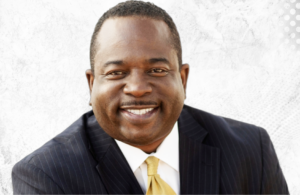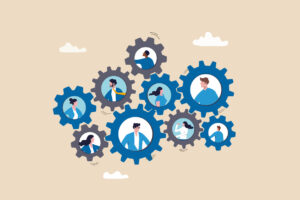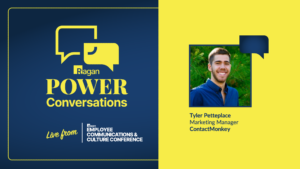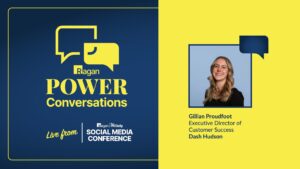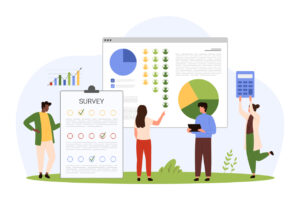Use goal setting to deliver more engaging, informative town halls
Tips for asking questions that ground the design of your events in goals.

During a recent Ragan webinar, “How to Execute Outstanding Town Halls,” Ragan Communications Leadership Council member Ashley Pope, assistant vice president of enterprise communications at Jackson, unpacked how she took a goal-based approach to understand how the Lansing, Mich.-based financial company’s town halls could be refined for maximum engagement.
Why was this an imperative? Because when you think about the function of town halls at scale, said Pope, “boring business presentations don’t deliver business outcomes.”
Start goal setting from a position of trust
Pope emphasized starting from a position of trust with business leaders by partnering with them and understanding what they’re going through.
“It’s a commitment to curiosity to ask what their objectives are, what are their goals, what environment are they working in?” she said.
Pope shared a three-pronged approach to starting with goals in mind:

Unpacking the concept of employee “stickiness,” Pope explained that it refers to how you keep them inspired, aligned and engaged to deliver on business outcomes.
“This is a framework that we’ll now use to design a town hall that goes right,” she said. And the framework will apply to different town halls, such as one with a Jackson operations team.
The framework in practice
Pope said they started by asking the operations team leaders about their objectives. “We went through the series of questions with our operations leaders and started with, ‘What do you want them to know?” she said.
Applying this exercise to the operations team shaped the goal of the town hall: to create a celebratory experience that recognized employees’ value and commitment to the organization, acknowledged feedback and shared action plans designed to address that feedback.
Pope went through these questions with operations leaders and found they wanted employees to:
Know: Leaders listened to employee feedback and put together strategies to address their pain points with regard to systems stability, the ability to pull information more quickly and having leaders dedicated to development and support for associates.
Do: Leaders designed strategies to address those pain points, but making those adjustments in real time meant adopting changes quickly to maintain service levels and offering grace to leaders changing roles to support the new strategies.
Feel: The operations team wanted employees to feel heard, valued and energized ahead of a high-volume season.
The goal grounds the design
Once you have the goal in mind, it’s time to start designing the entire experience from beginning to end. “Now you get to talk about the fun stuff,” Pope said.
How you get there involves a cycle that goes through:
Theme: This is where knowing what’s happening in the business is a positive. Using the theme “We move mountains,” Jackson was able to connect back to Customer Service Week. “Our service is a differentiator for us,” Pope explained. “It’s one of our core capabilities that really helps us with our advisors and the clients that trust us with their retirement income solutions.” Landing on the theme gave the design team fodder to pull pieces together and craft objectives that anchored within the content, the agenda and how Jackson coached speakers throughout the process.
Content: This shouldn’t be a free-for-all, but Jackson tends to allow freeform suggestions and a list of topics they’re thinking about. The multimedia team then sourced videos from the CEO, people in the field and from sales leaders internally.
Experience Design: One objective was to create connections between production units and a dispersed workforce. so Jackson had icebreaker questions right at the top and built breaks into the agenda so people could mingle and have conversations. Associates walked the room and got to know one another. The theme extended to the “Flannel Fest” social contest, campfire games and themed food. Jackson also considered involvement for remote workers who felt left out of past events. This time, they built in mountain-themed assets and a scavenger hunt that virtual teams could get into.
Delivery: Recaps of the event included photos and multimedia assets documenting the experience, anchoring the whole experience from beginning to end to the goal.
Check out Pope’s full presentation, which begins at the 2:06 mark, here:

